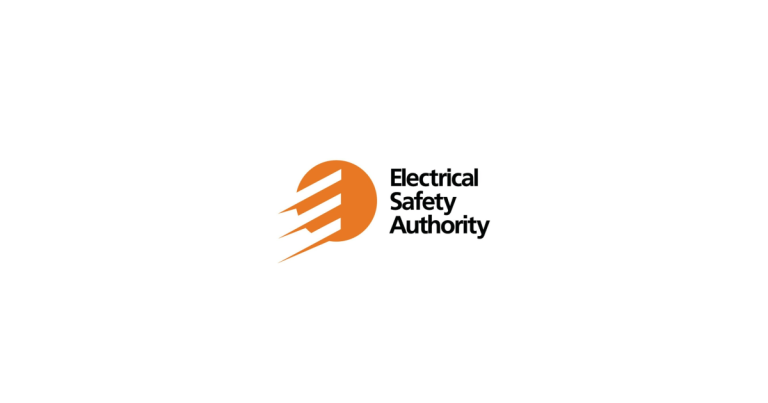Surviving Long Term Sequelae of Electrical Shock Hazard Exposure

March 15, 2021
By Terry Becker, P.Eng., CESCP, IEEE Senior Member
The electric shock hazard has been neglected. Journeyman Electricians have accepted been shocked as part of the job, a “right” of passage, a badge of honour. This has not been acceptable and Journeyman Electricians may not be aware of the long term sequela health effects of receiving multiple low voltage electrical shocks and how it may have impacted them. With respect to treatment there is only a single formal recognized treatment centre in Canada, the St Johns Rehab Centre. Electrical Injury Program .

When a worker is exposed to the electric shock hazard there are two possible outcomes. A shock is received and the worker survives or they die. Electrical incidents statistics confirm that fatal electrical injuries from the shock hazard are occurring at an alarming rate, on average still once a day in North America. What is not published in electrical incident statistics reports is the number of electrical workers that may suffer from the long term effects of receiving multiple low voltage (≤750V) shocks. The medical term for this is “sequela.”
Sequela: “A sequela is a pathological condition resulting from a disease, injury, therapy, or other trauma. Typically, a sequela is a chronic condition that is a complication which follows a more acute condition. It is different from, but is a consequence of, the first condition.” Wikepedia.
We know what the immediate short term effects of receiving an electric shock are, as I noted above you survive the electric shock or you die. The table below lists the short term immediate effects of receiving an electric shock.
Table 1 – Immediate Effects of Electrical Current Flow Through The Human Body
|
Current mA (milli-amps) |
Physiological Effect On Human Body |
Human Perception & Effect On Human Body |
|
< 1ma |
None |
Imperceptible |
|
1 mA |
Perception threshold |
Mild sensation |
|
1-10 mA |
Painful sensation | |
|
10 mA |
Paralysis threshold of arms and hands |
Cannot release hand grip “no let go” threshold |
|
30 mA |
Respiratory paralysis |
Breathing may stop |
|
75 mA |
Heart fibrillation possible |
Heart action mis coordinated |
|
250 mA |
Heart fibrillation |
Heart may stop |
|
4 amps |
Heart paralysis threshold |
Heart stop for duration of current flow |
|
5 amps or greater |
Tissue burns |
Most likely fatal vital organs are burned or damaged, can lead to amputation of limbs |
Note:
The amount of current, the current flow path through the human body, and length of time of current flows through the human body determines heart fibrillation probability. Male and female body resistance will be different and added muscle mass increases conductivity. Wet or dry skin at the point of current entry will impact current flow. The number of times an electric shock is received impacts the long term effects and possibly sequela.
If you are a Journeyman Electrician reading this article you may have long term sequela from been shocked multiple times throughout your career, at 120VAC, 208VAC, 240VAC, 277VAC, 347VAC, 480VAC or 600VAC. If you have some of the symptoms I list in this article you may want to follow up with your family physician. The potential long term sequela from receiving multiple low voltage electric shocks may be psychological, neurologic or physical symptoms.
Listed below are some potential long term effects of receiving multiple low voltage shocks:
Psychological Symptoms:
Behaviour changes and attention span issues. You may be irritable, get frustrated, experience anger and may be physically aggressive. You may experience depression and posttraumatic stress disorder depending on whether you experienced “no-let-go” or became unconscious due to the shock exposure. Other sequela may be: insomnia, anxiety, fear of electricity, panic attacks, guilt, and moodiness.
Neurological Symptoms:
Memory loss, numbness, headaches, chronic pain, poor concentration, carpal tunnel, seizure disorders, dizziness, tinnitus, and tremor.
Physical Symptoms:
Generalized pain, fatigue, exhaustion, reduced range of motion, contracture, night sweats, fever, chills or joint stiffness.
Based on research completed the effects listed will change or may be more severe dependent on the shock resulting from no-let-go, was the shock momentary contact, the path the current flowed through the body, duration and amount of current. There are two hospitals that actually have electrical injury research and treatment programs: St John’s Rehab in Ontario (https://sunnybrook.ca/content/?page=sjr-patvis-prog-electrical) and the University of Chicago, Chicago Electrical Trauma Rehabilitation Institute (https://cetri.org/).
John Knoll’s Story:
John Knoll is a Master Electrician, and a Professional Electrical Contractor (PEC) with the Electrical Contractors Association of Alberta (ECAA) and resides in Edmonton, Alberta, Canada. Unfortunately John is currently not working in the trade and is suffering from sequalae related to receiving multiple low voltage shocks while at work starting as an Apprentice and while he was a Journeyman Electrician. I think the story of John’s career as an Apprentice Electrician and Journeyman Electricians is very common. John worked in the non-unionized side of the trade for most of his apprenticeship and career.
When I asked John about his exposure to shock he told me “as an Apprentice we played games in apartments while trimming out around being shocked at 120VAC with lighting circuits, we were not taught to fear electricity or respect it. I was never concerned about 120VAC, 240VAC, I didn’t consider it an issue to receive those shocks. I always said I would rather receive one knowing it was coming then not knowing. So after tick testing, we would touch the wires, sometimes the tick tester lied and it was better to know it was coming. It was the most we were able to do most times not being supplied the proper PPE or training to do our duties.”
John started in the electrical trade in 2005 and told me he worked energized on three phase 208VAC panelboards as an Apprentice a few months into the trade and had received shocks as early as the first week in the trade.
John stated, “I was probably shocked up to 500 times.” This may be hard to believe, but I have talked to other Journeyman Electricians who quote they were shock hundreds of times during their career. John quoted that “the Journeyman Electricians I worked with when I was an Apprentice never identified the hazards and long term effects around the electric shock. There was no formal training and no personal protective equipment provided. If we wanted a tick tester we had to buy them ourselves.” “Live” work was not questioned, “we had to work energized, as we couldn’t de-energize parts of the job. For example, working in the parkade or on house panels, I couldn’t turn off the power or the lights. We cut in panels energized and rarely could turn off the power as it impacted the other trades. I didn’t receive any training on lockout until I worked the last few months of my fourth period in the Union.”
I think John’s comments about working on energized conductors and circuit parts was and is still the norm in the industry. Yes there have been changes in the last decade in Canada with the CSA Z462 Workplace electrical safety Standard published, but the focus unfortunately has been on arc flash and not shock.
The bottom line is Apprentice Electricians and Journeyman Electricians have been shocked as a normal condition of doing their jobs with a complete lack of awareness of the potential long term effects by receiving multiple low voltage shocks throughout their careers. The American Electrician’s Handbook from 1942 to 1960 taught electricians that the human body could be used to detect voltages up to 250VAC by touching with the hands or for low voltages using your mouth to “taste” electricity.
In John’s case he was experiencing psychological, neurological and physical symptoms that he did not know where potentially attributed to receiving multiple low voltage shocks throughout his career as an Apprentice and Journeyman Electrician. When I interviewed John and he discussed his injuries it was unbelievable, but based on information that I had over 10 years ago – published by Dr. Joel Fish, who at the time was practicing as the St Johns Rehab Centre in Ontario – the long term sequelae of electric shock are real. What changed John’s perception of shock and his sequelae was when he told me he was shocked at 347VAC, he said that shock was different, “I was held and could not let go, I knew I was going to die and had no control of my body. I was saved by gravity when I fell off my ladder. I thought I was dying, the pain was unbelievable as I lost the ability to breath” and at that point, John said, “I had a newfound respect and fear of electricity.”
John moved on in his career and had his own company from 2010 until he could no longer work due to escalation in his symptoms after the shocks he received throughout his career. He believes he started experiencing symptoms as early as 2 years into the trade and began seeking chiropractic and massage care more often. A known relief of nerve pain that is caused by the long term sequelae of electric shock. In 2016 his life started to change rapidly and looking back now he knows that the multiple electrical shocks he received led to his deterioration in mental and physical health, his personal life was directly impacted, becoming divorced from his wife and issues with his friend and business partner.
Why was John shocked at work? His comments align with the results of a recent shock research project completed by Technical Safety British Columbia (TSBC, https://www.technicalsafetybc.ca/State-of-Safety-2018/safety-stories/electric-shock). In February 2019, the TSBC published a report related to the shock hazard in BC “Negotiating Safety – Understanding the Behavioral and Sociocultural Factors Related to Electric Shock.” The report was based on interviews and surveys completed and quoted reasons why electricians have worked and continue to work energized as: Societal, Sectoral, Organizational, Interpersonal and for Individual reasons. The report concluded that poor training, poor work practices, complacency, not refusing to work energized, “I thought someone else had turned off the power,” or peer pressure (e.g. loss of job, keep boss happy, rebuked by other workers) influenced why working energized was never questioned.
I believe John’s story is not an isolated case. I believe there are hundreds, potentially tens of thousands of Journeyman Electrician’s in Canada, the USA, and Internationally that have long term sequelae and have not correlated them to receiving multiple low voltage shocks throughout their career. The personal mental and physical health issues, impact on family and the potential impact on continuing in the trade and potential financial impacts are significant. If you are a Journeyman Electrician and are experiencing symptoms listed in this article, they are most likely attributed to you receiving multiple low voltage electric shocks while working.
A big shout out and thank you to John Knoll for telling me his story, his drive, entrepreneurial spirit, his candor and sharing his emotions.
References:
1.“Long-term sequelae of electrical injury.” Dr. Marni L. Wesner, MD MA FCFP DipSportMed, and Dr. John Hickie, MD, MSc, CCFP CCBOM. Canadian Family Physician, CFP-MFC Official Publication of The College of Family Physicians of Canada, September, 2013. https://www.ncbi.nlm.nih.gov/pmc/articles/PMC3771718/.
2.Biophsical Injury Mechanisms in Electrical Shock Trauma. Raphael C. Lee, Dajun Zhang and Jurgen Hanning. Annu. Rev. Biomed. Eng. 2000:2:477-509.
3. American Electrician’s Handbook, Tyrell Croft Consulting Engineers. Clifford C. Carr, E.E., P.E., Fifth Edition, McGraw-Hill Book Company, Inc., 1942. “Measuring, Testing and Instruments, 158. Electricians often test circuits for the presence of voltage by touching the conductors with the fingers. 159. The presence of low voltages can be determined with tasting,”
4. Technical Safety British Columbia (TSBC) Electric Shock. https://www.technicalsafetybc.ca/State-of-Safety-2018/safety-stories/electric-shock
Terry Becker, P.Eng., CESCP, IEEE Senior Member is the first past Vice-Chair of the CSA Z462 Workplace electrical safety Standard Technical Committee and currently a Voting Member and Clause 4.1 and Annexes Working Group Leader. Terry is also a Voting Member on the CSA Z463 Maintenance of electrical systems Standard and a Voting Member of the IEEE 1584 Guide for Performing for Arc-Flash Hazard Calculations. Terry has presented at Conferences and Workshops on electrical safety in Canada, the USA, India and Australia. Terry is a Professional Engineer in the Provinces of BC, AB, SK, MN and ON. Terry is an Electrical Safety Specialist, Management Consultant, and can be reached at 1-587-433-3777 or by email terry.becker@twbesc.ca.




![Guide to the Canadian Electrical Code, Part 1[i] – A Road Map: Section 52 — Diagnostic imaging installations](https://electricalindustry.ca/wp-content/uploads/2022/11/Guide-CE-Code-2-768x432.png)





![Guide to the Canadian Electrical Code, Part 1[i] – A Road Map: Section 52 — Diagnostic imaging installations](https://electricalindustry.ca/wp-content/uploads/2022/11/Guide-CE-Code-2.png)






